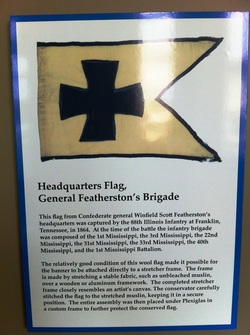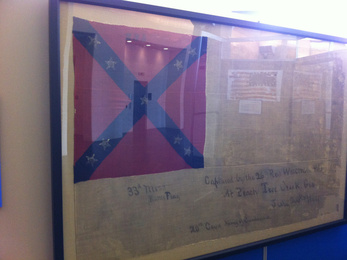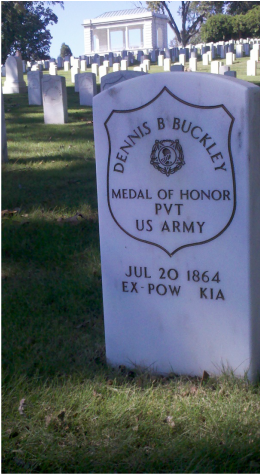 Featherston's Brigade Flag ~ Franklin 1864
Featherston's Brigade Flag ~ Franklin 1864 War Cry Heal Union: The series (5th of 10)
Honor and Death were present when Van de Graaff met Buckley.
Imagine a hot Georgia mid-afternoon 150 years ago today; about 1,000 soldiers, mostly Mississippians, hear the fate of Atlanta (and thus the Confederacy) is in their hands.
Now imagine another moment, one less than an hour from the other one, of a Mississippian (Van de Graaff / a name implying Germany) and a New Yorker (Buckley / who was born in Canada) meet and try to kill each other.
Here, I’ll explain …
The commander of the Mississippi brigade, Brigadier General Winfield Scott Featherston, a veteran who fought in the eastern theater (Virginia and Maryland) under the command of Robert E. Lee (at Antietam in 1862, for example), and then was transferred west (also by Lee) later that year. On this day, 20 July 1864, Featherston is leading an aspect of Confederate General John B. Hood’s plan of attack on the Federal approach to Atlanta. Hood was put in command by Jefferson Davis (President of the Confederacy) and brought an “I’ll attack” strategy to the defense of Atlanta; the battle at Peachtree Creek was his first effort.
 33rd Mississippi Battle Flag ~ Peachtree Creek 1864
33rd Mississippi Battle Flag ~ Peachtree Creek 1864 The 26th Wisconsin captured the battle flag pictured here from one of Featherston’s battalions, the 33rd Mississippi, and its loss (capture) would have taken place during this phase of the battle; in total, Featherston’s brigade would lose seven battle flags at Peachtree Creek.
Which brings us to the meeting of Van de Graaff and Buckley.
 Private Dennis B Buckley ~ Peachtree Creek 1864
Private Dennis B Buckley ~ Peachtree Creek 1864 Being from Illinois, I usually see our Civil War more or less from the Federal perspective; today, having been myself an Adjutant (battalion staff officer/personnel, US Army, Saudi Arabia 1991), it’s Van de Graaff that I’m feeling. In his report of the battle, Featherston made special mention of the 31st’s leaders who died on 20 July 1864, specifically, their commander Lt. Col. J. W. Drane and executive officer Major F. M. Gillespie. The 31st suffered 164 casualties from 215 men sent into battle; here’s what Featherston wrote in his report of Van de Graaff, followed by the names of the unit’s leaders killed or reported missing: “Adjt. W.L. Van de Graaff, of the 31st Mississippi Regiment, a gallant and accomplished officer, a young man of promise and great moral worth, seized the colors of his regiment and bore them to the front after two or three color bearers had been shot down, and following their example shared their fate. He fell with the colors in his hand.”
Killed:
Lt. Col. J. W. Drane, Major F. M. Gillespie, Capt. John B. Ketchum, Adjutant W. J. Van de Graaff , Lt. W. D. Carradine, Lt. J. C. Morrow, Sgt. J. M. Johnson.
Missing:
Capt. G. W. Lewdon, Capt. C. W. Richards, Lt. S. M. Bobbs, Lt. J. C. Hallum, Lt. Thomas Lyles, Lt. P. G. McGraw, Sgt. J. S. Bridges, Sgt. J. J. Cudley.
Representing all our citizens in a new constitutional House of Representatives, one for every 30,000, is something we have to look forward to; while doing so, let’s look back and perhaps think again ~ of the individual citizen-soldiers of our Civil War ~ as well.
Next time, July 27th, is the sixth essay in the War Cry Heal Union series ~ Henry Lee III, father of Robert E. Lee, defends the First Amendment and the Unrepresented.
Posted by Bryan W. Brickner

 RSS Feed
RSS Feed
